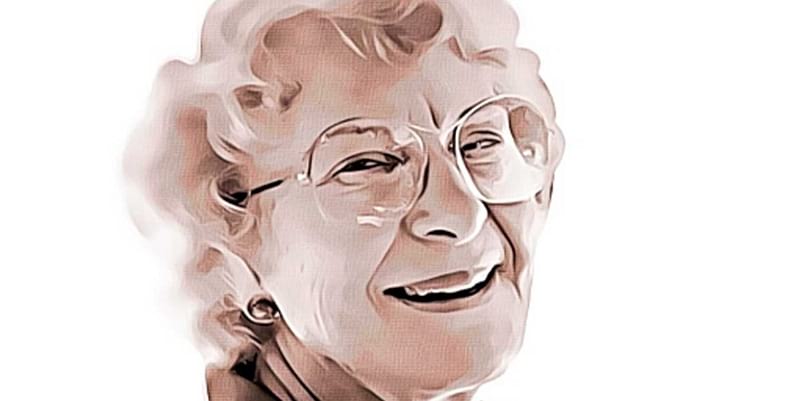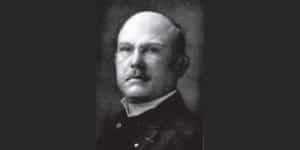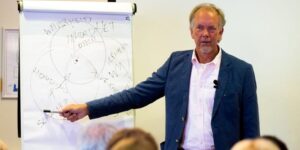Virginia Satir biography, theory and quotes

Virginia Satir (June 26, 1916 – September 10, 1988) was an American psychotherapist and author. Virginia Satir is recognized as the pioneer of family therapy for her pioneering work in family reconstruction therapy. She is also known for developing the Satir change model, a change management model applied by organizations large and small. Enjoy reading!
Virginia Satir biography
Early years and education
Virginia Satir was born Virginia Pagenkopf in Neillsville, Wisconsin, United States. She was the eldest of five children born to Alfred Reinnard Pagenkopf and Minnie Happe Pagenkopf.
Virginia was a very curious and inquisitive child and taught herself to read at the age of three. As a small child, she dreamed of becoming a child detective.
In 1929, the entire family moved to Milwaukee, where Virginia also attended high school. During this time, the United States was going through the Great Depression, making it a challenging period for the family financially.
To ease the pressure on the family, Virginia decided to look for a part-time job and accelerate her high school graduation. She passed it in 1932, after which she enrolled at Milwaukee State Teachers College.
Also during this period, Virginia had several side jobs to support the family. She paid for the training herself by working in various department stores and by earning some extra money as a babysitter.
In 1936, she received her bachelor’s degree from Milwaukee State Teachers College, after which she enrolled at Northwestern University in Chicago. At the same time, she continued to teach at the public school in Williams Bay, Wisconsin.
She completed her master’s degree at the University of Chicago School of Social Services Administration five years later, after submitting her thesis.
It was during this time that Virginia realized that as a teacher she could not only help children in the classroom but also help their parents, improving the family dynamics of many families.
Virginia began meeting her students’ parents and began to see the family system as a reflection of the world as a whole. She said, “if we can heal children and families, we can heal the world.”
Career of Virginia Satir
After completing her studies, Virginia Satir started her own therapy career. In 1951 she helped a first family with problems.
Four years later, she joined the Illinois Psychiatric Institute, where she mentored other therapists with the goal of focusing as much as possible on the family as a whole rather than the individuals.
In the late 1950s, she and several others founded the Mental Research Institute in California. She received a scholarship for it in 1962, allowing her to participate in the first formal therapy training program.
The following year, she became director of the residential training department. In 1964 she wrote her first book, Conjoint Family Therapy. This book was created from her training manual that she wrote for students at the Mental Research Institute. Two years later, she published another book: Peoplemaking.
In 1977, the Avanta Network was founded, led by Virginia Satir. She was also appointed to the Steering Committee of the International Family Therapy Association.
In the 1980s, Virginia focused primarily on mentoring therapists and marriage counselors to focus on providing relationship education. According to her, this was of crucial importance for any healthy network, including organizations. She emphasized this belief in the last book she wrote before she died. This book is called The New Peoplemaking.
Contribution to psychology
Satir approached therapy from a perspective not used before. She believed that the problems clients encountered were rarely the real problems. According to her, deeper problems were more often the cause and superficial problems were often confused with those deeper problems.
She stated that psychological problems were often the result of negative experiences in the family and upbringing. She placed a strong focus on treating the whole family rather than the individual.
Theory
She captured her vision in Satir’s Transformational Systemic Therapy model. This model is also known as the Satir change model. The focus is on involving the inner person and analyzing the situation and the choices of a person.
In her book Conjoint Family Therapy, she emphasized the importance of individual self-esteem. She received a lot of recognition for this from the world of psychology. Her popularity grew enormously during this period. Her books were in demand from all over the world and she was recognized by the American Association for Marriage and Family Therapy and the Academy of Certified Social Workers.
In her practice, Satir helped people cope with accepting life as it is. This is crucial to achieve a healthy state of mind. She encouraged her clients to meditate, do breathing exercises and visualize positive results.
Personal life of Virginia Satir
Virginia Satir happened to meet a soldier at an unknown bus station in 1941. Within three weeks after their meeting, they were married. The soldier in question left for Europe during World War II and returned after the war ended. During his absence, Satir adopted two children.
When her husband returned from Europe, the marriage could no longer stand the test of time. They filed for divorce in 1949.
In 1951 Satir married again, this time to Norman Satir. He was a psychiatrist.
Virginia Satir died on September 10, 1988. She was 72 years old.
Virginia Satir quotes
- “Adolescents are not monsters. They are just people trying to learn how to make it among the adults in the world, who are probably not so sure themselves.”
- “As a therapist, I am a companion. I try to help people tune into their own wisdom.”
- “Each morning when you wake up, bow three times before the mirror and say, “The world is a better place because I am here.”
- “Every word, facial expression, gesture, or action on the part of a parent gives the child some message about self-worth. It is sad that so many parents don’t realize what messages they are sending”
- “Feelings of worth can flourish only in an atmosphere where individual differences are appreciated, mistakes are tolerated, communication is open, and rules are flexible – the kind of atmosphere that is found in a nurturing family.”
- “I believe the greatest gift I can conceive of having from anyone is to be seen by them, heard by them, to be understood and touched by them. The greatest gift I can give is to see, hear, understand and to touch another person. When this is done I feel contact has been made.”
- “I give life to that which I notice. What I don’t notice dies.”
- “I know people can change-right down to my bones, through every cell, in every fiber of my body-I now that people can change. It is just a question of when and in what context.”
- “I own me, and therefore, I can engineer me. I am me, and I am Okay.”
- “I want to appreciate you without judging. Join you without invading. Invite you without demanding. Leave you without guilt.”
- “I want to love you without clutching, appreciate you without judging, join you without invading, invite you without demanding, leave you without guilt, criticize you without blaming, and help you without insulting. If I can have the same from you, then we can truly meet and enrich each other.”
- “I want you to get excited about who you are, what you are, what you have, and what can still be for you. I want to inspire you to see that you can go far beyond where you are right now.”
- “I believe the greatest gift I can conceive of having from anyone is to be seen by them, heard by them, to be understood and touched by them.”
- “It is okay for me to feel angry and to express it in responsible ways.”
- “It’s sad that children cannot know their parents when they were younger; when they were loving, courting, and being nice to one another. By the time children are old enough to observe, the romance has all too often faded or gone underground.”
- “Life is not the way it’s supposed to be, it’s the way it is. The way you cope with it is what makes the difference.”
- “Many people are living in an emotional jail without realizing it.”
- “Once a human being has arrived on this earth, communication is the largest single factor determining what kinds of relationships he makes with others and what happens to him in the world about him.”
- “Our biggest problem as human beings is not knowing that we don’t know.”
- “Over the years I have developed a picture of what a human being living humanely is like. She is a person who understand, values and develops her body, finding it beautiful and useful; a person who is real and is willing to take risks, to be creative, to manifest competence, to change when the situation calls for it, and to find ways to accommodate to what is new and different, keeping that part of the old that is still useful and discarding what is not.”
- “People prefer the certainty of misery to the misery of uncertainty.”
- “Problems are not the problem: coping is the problem.”
- “So much is asked of parents, and so little is given.”
- “The full life is filled with vulnerability, not defense. You face whatever feeling there is.”
- “The Problem is never the problem! It is only a symptom of something much deeper.”
- “The symbol in Chinese for crisis is made up of two ideographs: one means danger, the other means opportunity. This symbol is a reminder that we can choose to turn a crisis into an opportunity or into a negative experience.”
- “There are five freedoms: The freedom to see and hear what is; The freedom to say what you feel and think; The freedom to feel what you actually feel; The freedom to ask for what you want; The freedom to take risks on your own behalf.”
- “To see and hear what is here, instead of what should be, was, or will be. To say what I feel and think instead of what I should. To feel what I feel instead of what I ought. To ask for what I want instead of always waiting for permission. To take risks on my behalf, instead of choosing to be safe and not rock the boat.”
- “We can learn something new anytime we believe we can.”
- “We get together on the basis of our similarities; we grow on the basis of our differences.”
- “We must not allow other people’s limited perceptions to define us.”
- “We need 4 hugs a day for survival. We need 8 hugs a day for maintenance. We need 12 hugs a day for growth.”
- “What lingers from the parent’s individual past, unresolved or incomplete, often becomes part of her or his irrational parenting.”
- “You have all played a significant part in my development of loving. As a result, my life has been rich and full, so I leave feeling very grateful.”
- “Your responses to the events of life are more important than the events themselves.”
Publications and books
- 2001. Self Esteem. Celestial Arts.
- 1998. Concepts of communication: Ways of perceiving the world: Definition of a relationship. Journal of Couples Therapy, 7(2-3), 1-9.
- 1994. Helping families to change. Jason Aronson, Incorporated.
- 1991. The Satir model: family therapy and beyond. Palo Alto, CA: Science and Behavior Books.
- 1990. Say it straight: From compulsions to choices. Science & Behavior Books.
- 1988. The new peoplemaking. Science & Behavior Books.
- 1988. Family reconstruction: The family within—a group experience. Journal for Specialists in Group Work, 13(4), 200-208.
- 1987. The therapist story. Journal of Psychotherapy & the family, 3(1), 17-25.
- 1986. Assertive / leveling communication and empathy in adolescent drug abuse prevention. Journal of Primary Prevention, 6(4), 231-243.
- 1983. Satir step by step: a guide to creating change in families. Palo Alto, CA: Science and Behavior Books.
- 1983, 1967. Conjoint family therapy: A guide to theory and technique. Palo Alto, CA: Science and Behavior Books
- 1978. Your many faces. Celestial arts.
- 1976. Making contact. Celestial arts.
- 1976. Changing with families: A book about further education for being human (Vol. 1). Science and behavior Books.
- 1975. Family life education-a perspective on the educator. Small Group Behavior, 6(1), 3-10.
- 1972. Peoplemaking. Science and Behavior Books.
- 1963. The Quest for Survival A Training Program for Family Diagnosis and Treatment. Acta Psychotherapeutica Et Psychosomatica, 33-38.
- 1961. A method of analysis of a family interview. Archives of General Psychiatry, 5(4), 321-337.
How to cite this article:
Janse, B. (2022). Virginia Satir biography, theory and quotes. Retrieved [insert date] from Toolshero: https://www.toolshero.com/toolsheroes/virginia-satir/
Published on: 06/08/2022 | Last update: 15/11/2022
Add a link to this page on your website:
<a href=”https://www.toolshero.com/toolsheroes/kevin-lane-keller/”>Toolshero: Virginia Satir biography, theory and quotes</a>











